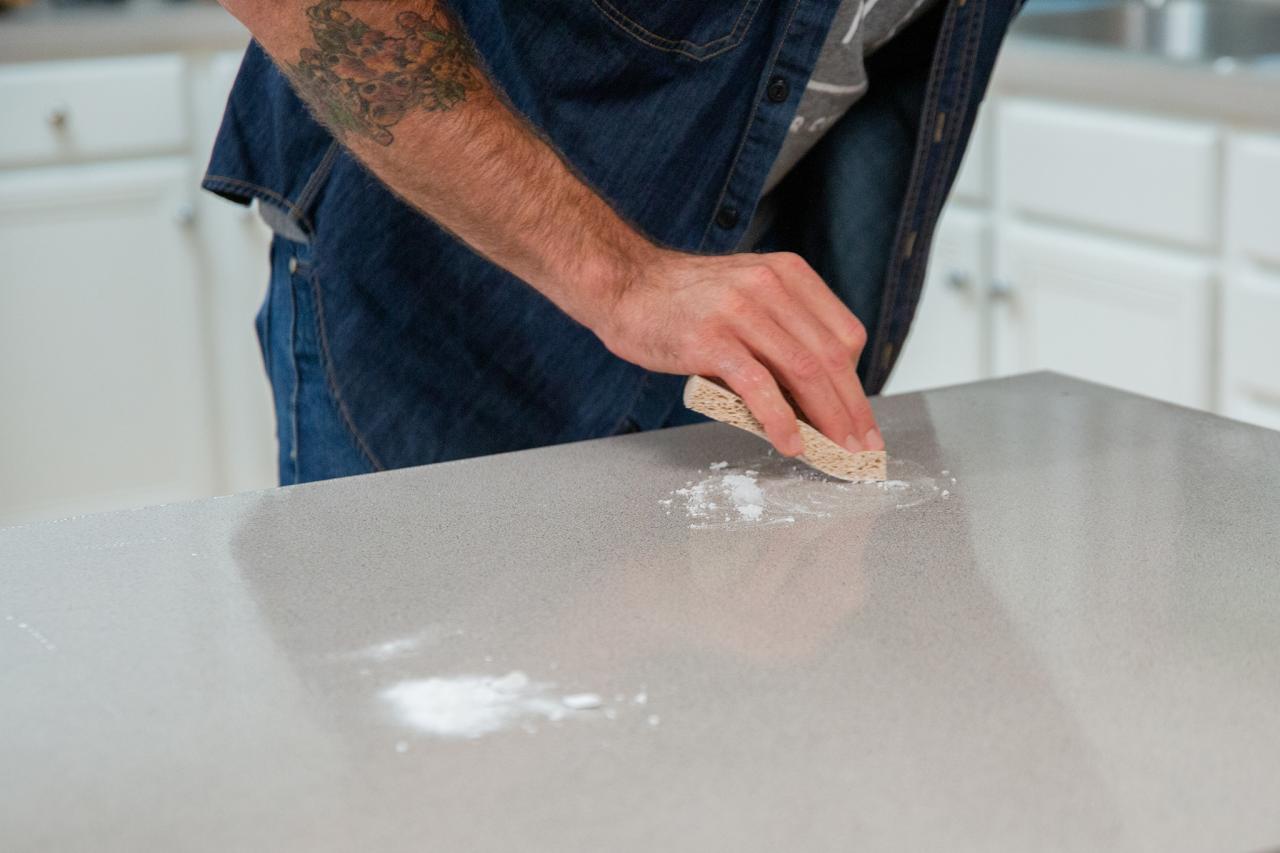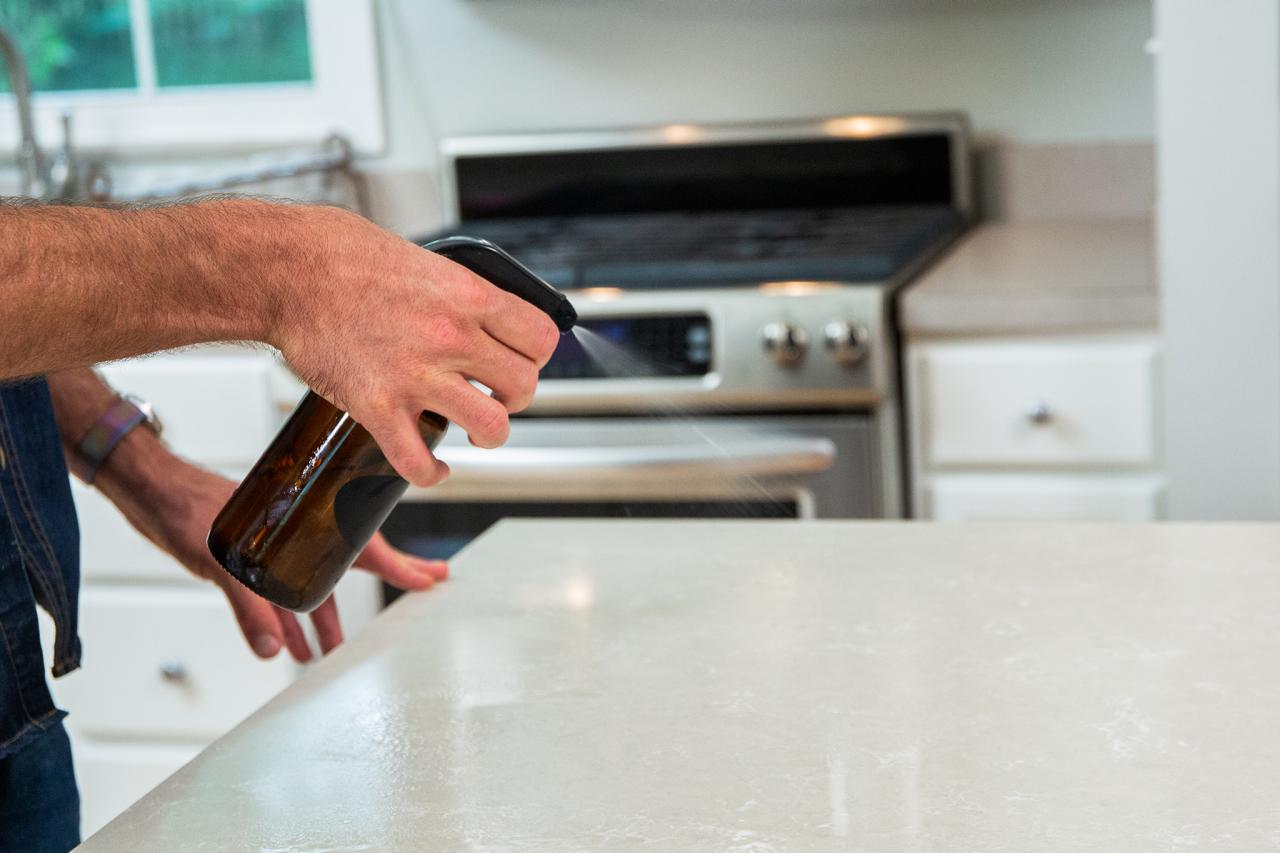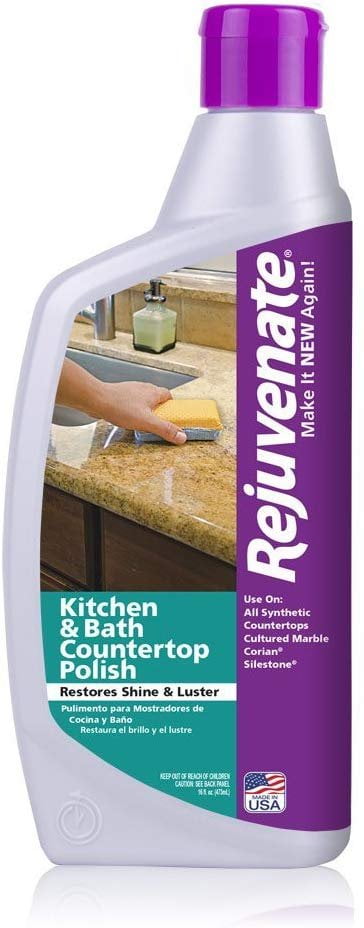Laminate countertops are a popular choice for many homes due to their affordability, versatility, and wide range of styles. However, despite their durability, laminate surfaces require regular maintenance and proper care to retain their appearance and functionality over time. Cleaning laminate countertops effectively ensures that they remain in pristine condition, resist stains, and avoid damage from harsh cleaning agents or improper techniques. A good laminate countertop cleaner, therefore, becomes an essential part of any kitchen or bathroom maintenance routine. But with numerous products and homemade solutions available, it can be difficult to know which cleaning methods work best, what ingredients are safe, and how to avoid damaging the surface. Here’s a comprehensive guide to cleaning laminate countertops.
First, understanding the nature of laminate is crucial. Laminate countertops are made from layers of plastic bonded to particleboard or kraft paper, making them relatively water-resistant, but not invulnerable to moisture damage. This means that while they can handle light splashes and minor spills, prolonged exposure to water can lead to swelling, peeling, or warping. This is particularly important when choosing a cleaner, as water-based cleaners should be used sparingly and wiped dry immediately after application to prevent water from seeping into seams or edges.
For daily cleaning, a mixture of mild dish soap and warm water is usually sufficient. Use a soft cloth or sponge to apply the soapy water, scrubbing in gentle, circular motions to remove food debris, grease, and stains. The mild soap helps break down oils and grime without stripping the surface’s protective layer. After scrubbing, rinse the countertop with clean water and wipe it dry with a microfiber cloth to prevent streaking and water spots. This simple cleaning routine, when performed regularly, can help prevent stains from setting in and reduce the need for more aggressive cleaning methods down the line.
For tougher stains like coffee, tea, or dried food, a more potent cleaner may be necessary. One option is a mixture of baking soda and water, which creates a mild abrasive that can lift stains without scratching the laminate surface. Apply the paste to the stain and let it sit for a few minutes before gently scrubbing with a soft cloth. Avoid using excessive force, as aggressive scrubbing can damage the laminate’s finish. Afterward, wipe away the residue with a damp cloth and dry the surface thoroughly.

Another option for stain removal is vinegar. Vinegar’s acidity makes it effective at breaking down tough stains and grease. A 50-50 solution of vinegar and water can be sprayed onto the laminate surface and left for a few minutes to loosen stubborn stains. Afterward, wipe it off with a damp cloth. However, vinegar can be corrosive over time, so it’s essential to rinse the surface thoroughly after cleaning and avoid prolonged exposure to the vinegar solution. Diluted vinegar is generally safe for laminate surfaces but should be used sparingly and cautiously.
One of the biggest concerns when cleaning laminate countertops is avoiding abrasive or harsh cleaning agents. Products containing bleach, ammonia, or scouring powders should be avoided, as they can dull the finish or cause discoloration over time. Similarly, scrubbing pads, steel wool, or any cleaning tool with a rough surface can scratch the laminate. These tiny scratches can become breeding grounds for bacteria, grime, and stains, eventually leading to more extensive damage that’s difficult to repair. It’s always best to stick to soft cloths or non-abrasive sponges for cleaning laminate.
When dealing with sticky substances like glue, adhesive, or gum, freezing the area with an ice pack can make it easier to scrape the residue off without damaging the surface. Once the substance has hardened, gently lift it off using a plastic scraper or a credit card. Avoid using metal tools, as they can easily scratch the laminate surface. After removing the sticky residue, clean the area with a mild cleaner to remove any remaining particles.

Maintaining a laminate countertop also involves preventing damage from hot items. Although laminate countertops are relatively heat-resistant, placing hot pots, pans, or appliances directly on the surface can cause burn marks or blisters. Always use trivets or heat-resistant mats to protect the surface. Similarly, avoid cutting directly on the countertop, as this can leave permanent scratches. Using cutting boards is essential for preserving the laminate’s smooth finish.
Regularly sealing the seams and edges of a laminate countertop can also help protect it from water damage. Over time, the adhesive that holds the laminate layers together can break down, leading to peeling or warping. Applying a silicone-based sealant around the edges, particularly near the sink or other moisture-prone areas, can help extend the lifespan of the countertop.
It’s also important to be mindful of spills, especially those involving acidic substances like lemon juice, vinegar, or wine. These can etch or discolor the laminate if left to sit for too long. Wiping up spills immediately and using coasters or placemats under beverages can prevent this kind of damage. In the event of an accidental spill, quickly blot (rather than wipe) the area to prevent the liquid from spreading and staining a larger portion of the countertop.
For those interested in using commercial cleaners, it’s essential to choose products specifically designed for laminate countertops. Many multi-surface cleaners may be too harsh for laminate, leading to dulling or discoloration over time. Reading labels carefully and testing any new cleaner in an inconspicuous area can help avoid accidental damage.
In addition to commercial cleaners, there are several natural alternatives that can be safely used on laminate countertops. Lemon juice, for example, is a natural degreaser and stain remover. When diluted with water, it can be sprayed onto the countertop and wiped away with a soft cloth. However, as with vinegar, it’s essential to rinse the surface thoroughly afterward to prevent any acidic residue from sitting on the laminate.
Essential oils can also be incorporated into your cleaning routine, not only to add a pleasant fragrance but also for their antibacterial properties. Tea tree oil, for example, is a natural disinfectant. Add a few drops to a water and vinegar solution, and spray the mixture onto the countertop. After wiping it off with a damp cloth, your laminate will be clean, fresh-smelling, and free of bacteria.
To maintain the shine of laminate countertops, a mixture of olive oil and vinegar can be applied once every few weeks. After cleaning the surface with soap and water, apply a small amount of the oil and vinegar mixture with a soft cloth, buffing the surface in circular motions. This adds a natural sheen and creates a protective barrier that can help repel water and stains.
Finally, to ensure that your laminate countertop lasts as long as possible, adopting a gentle cleaning routine is key. Avoid heavy-duty cleaners, abrasive tools, and excessive moisture. By following a consistent cleaning regimen, using mild cleaners, and taking steps to prevent scratches and heat damage, you can keep your laminate countertop looking as good as new for years to come.

Common Mistakes to Avoid
Using Harsh Chemicals: Many assume that stronger chemicals like bleach or ammonia will clean more effectively, but these can actually discolor or damage the laminate surface.
Scrubbing with Abrasive Materials: Rough sponges or scouring pads can leave micro-scratches on laminate, which will trap dirt and moisture, leading to further wear.
Allowing Water to Sit on the Surface: Although laminate is water-resistant, prolonged exposure to moisture can lead to peeling or swelling at the edges.
Placing Hot Objects Directly on the Countertop: Heat can cause blistering or burn marks on laminate surfaces, so always use trivets or heat-resistant mats.
Using Excessive Force to Remove Stains: Scrubbing too hard with abrasive substances can damage the protective coating of laminate.
Neglecting Sealing: The seams and edges of laminate countertops need to be sealed regularly to prevent moisture damage over time.

Can I use bleach to clean my laminate countertop?
It’s not recommended to use bleach on laminate countertops. Bleach is a very strong chemical that can cause discoloration and may erode the surface over time. Instead, opt for a milder cleaner like dish soap and water. If you’re dealing with stubborn stains, a baking soda paste or vinegar solution can be used, but always rinse thoroughly afterward.
How often should I clean my laminate countertops?
Ideally, you should wipe down your laminate countertop daily, especially if it’s in the kitchen where food particles, grease, and spills are common. For routine cleaning, a mild dish soap and water mixture is sufficient. For deeper cleaning, you can use vinegar or baking soda weekly to ensure that any residual grime is removed.
Can laminate countertops handle heat?
Laminate countertops are somewhat heat-resistant but not heatproof. Placing hot pans or pots directly on the surface can cause heat damage, including blisters or burn marks. It’s always a good idea to use trivets or heat-resistant mats to protect the countertop from direct exposure to hot items.
What should I do if water seeps into the seams of my laminate countertop?
If water seeps into the seams of your laminate countertop, it can cause swelling and peeling. Immediately dry the area with a towel and inspect the seam for damage. Applying a silicone-based sealant can help protect the seams and prevent future moisture from penetrating the layers.
Can I cut directly on my laminate countertop?
It’s not advisable to cut directly on a laminate countertop. While laminate is fairly durable, knives can easily leave permanent scratches on the surface, damaging both its appearance and integrity. Always use a cutting board when preparing food to avoid scratching your countertop.
Is it safe to use vinegar on laminate countertops?
Yes, but with caution. Vinegar can be an effective cleaner for laminate countertops, especially for breaking down grease and stains. However, it’s essential to dilute the vinegar with water (a 50-50 ratio is ideal) and to avoid letting the solution sit for too long, as the acidity could damage the laminate over time. Rinse the surface thoroughly after using vinegar.

The Best Countertop Cleaners for Every Surface Epicurious

Rejuvenate Kitchen & Bathroom Countertop Polish

Related articles:
- Black Marble Laminate Countertop
- Painting Kitchen Laminate Countertops
- Quartz Laminate Countertops
- Laminate Countertops Installation
- Laminate Countertop For Kitchen Island
- Kitchen Island Laminate Countertops
- Cheap Laminate Countertops
- Laminate Countertops That Look Like Stone
- Plastic Laminate Countertops
- Laminate Countertop Ideas For Kitchen